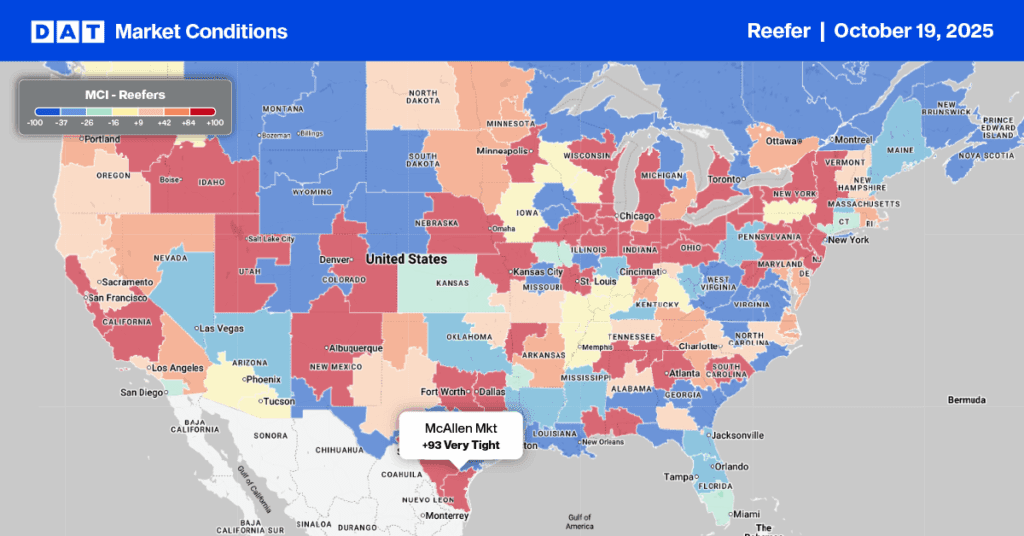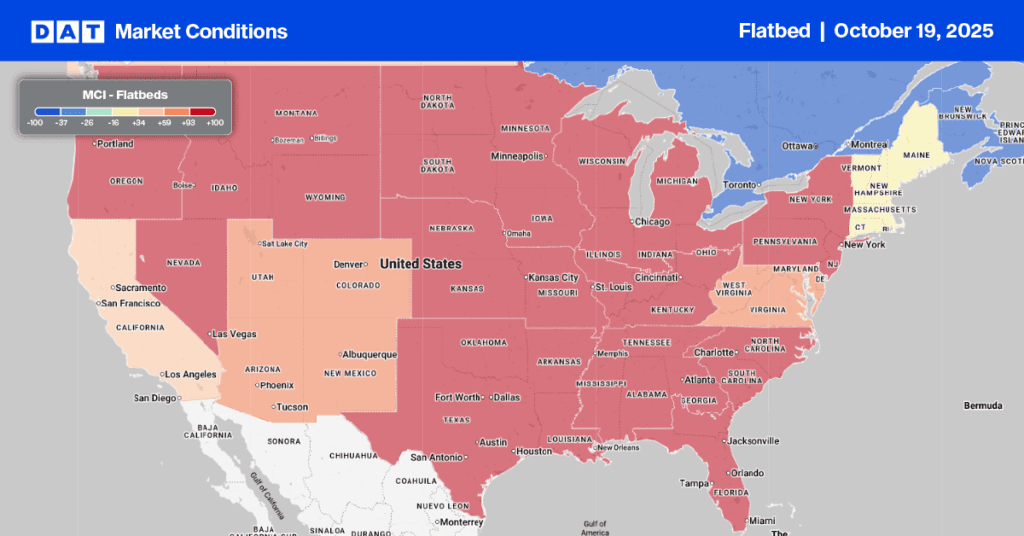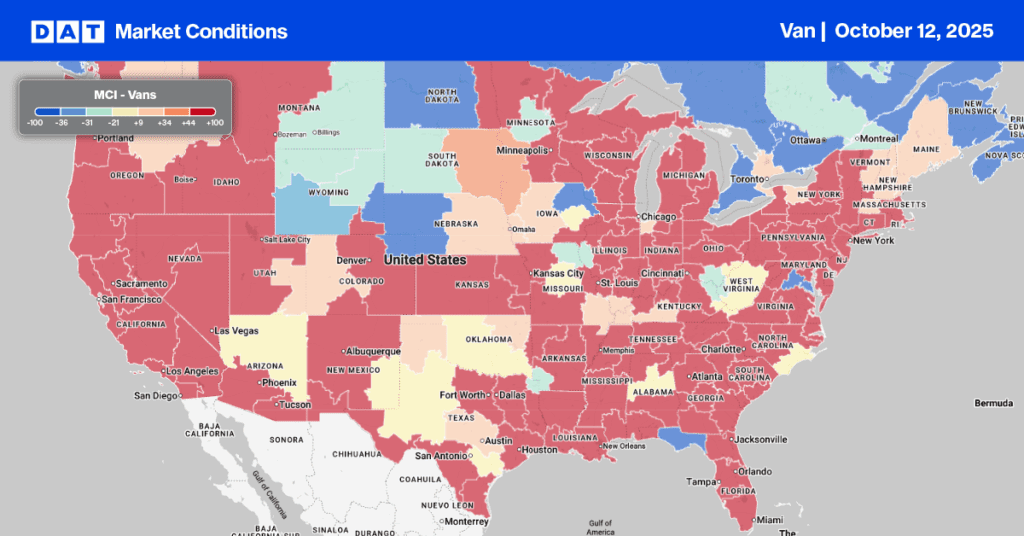Two years ago, DAT Freight & Analytics wrote about the significant shift in freight volumes into and out of the Phoenix market, traditionally known as a backhaul market for truckload carriers. The increase in outbound freight has been driven by the pandemic-driven shift in consumer buying patterns to more online retail purchases, which has driven demand for more warehouse space.
During the pandemic, most imports from Asia landed in Los Angeles and were shipped to nearby fulfillment warehouse markets, including Stockton and Ontario. But those warehouses filled quickly, and the imports kept piling up, creating opportunities for cities further inland like Phoenix, where there was plenty of land for warehouse development, to handle higher freight volumes.
In 2021, CBRE named Phoenix as the top growth market in North America for large-warehouse leasing activity reaching record levels for big-box warehouses – those of 200,000 sq. ft. or larger – amid user demand stoked by growth in online shopping and retailers stockpiling inventory due to the pandemic.
Significant investments in computer-chip manufacturing and electric and autonomous vehicles have made Phoenix the overnight darling of America’s innovation elite. LG Energy Solutions, one of the largest battery makers in the world, are building a new electric battery manufacturing facility in Arizona — the most significant investment in a single battery facility in North America.
Earlier this year, Ecobat, a world leader in battery recycling and lead production, said it would build a lithium-iron battery recycling facility in Casa Grande. Late last year, American Battery Factory said it would invest $1.2 billion to build a lithium-ion battery manufacturing facility in nearby Tucson, creating 1,000 jobs; Sion Power said it would also expand its battery-manufacturing operations there, creating over 150 jobs. This development will lead to more inbound freight to build and stock the new facilities and longer-term, more outbound freight for truckload carriers.
A freight oasis in the desert
According to CBRE Executive Vice President Joe Cesta, “strategically located, with the ability to quickly reach consumers across the western U.S. and benefiting from occupiers and residents leaving more challenging regulatory environments in coastal states.” For Phoenix truckload carriers, the immediate benefit during the pandemic was increasing inbound dry van volumes and spot rates driven by the staggering volume of imported e-commerce freight from overseas via the Ports of Los Angeles and Long Beach.
The volume of loads moved by truckload carriers in the DAT freight network into Phoenix since the start of 2019 has increased by 60%. Loads from Los Angeles to Phoenix increased by 49% over the same timeframe. Outbound loads from Phoenix have increased by 60% since 2019, with loads from Phoenix to Los Angeles increasing by 46% over the same timeframe. More truckload volume in and more truckload volume out; however, there are still more trucks than loads in both directions despite the overwhelming increase in freight volume.
Spot rate rollercoaster ride
At the height of imports and port congestion in Los Angeles in late 2021, linehaul spot rates (excluding fuel) on the 373-mile lane to Phoenix averaged $5.14/mile; today, spot rates are almost half what they were then hovering around $2.68/mile. When the pandemic began in March 2020, spot rates on this lane began to surge, almost doubling by the end of that year, averaging $4.20/mile through to the end of 2021 before the market cooled and imports began to slow. Compared to the pre-pandemic average of $2.86/mile on this lane, outbound rates were 47% higher during the pandemic, and at $2.68/mile this week, rates are around $0.18/mile lower than the long-term average.
They are, however, trending back toward the long-term average as the freight market rebalances and are forecasted to end the year closer to $2.95/mile.


